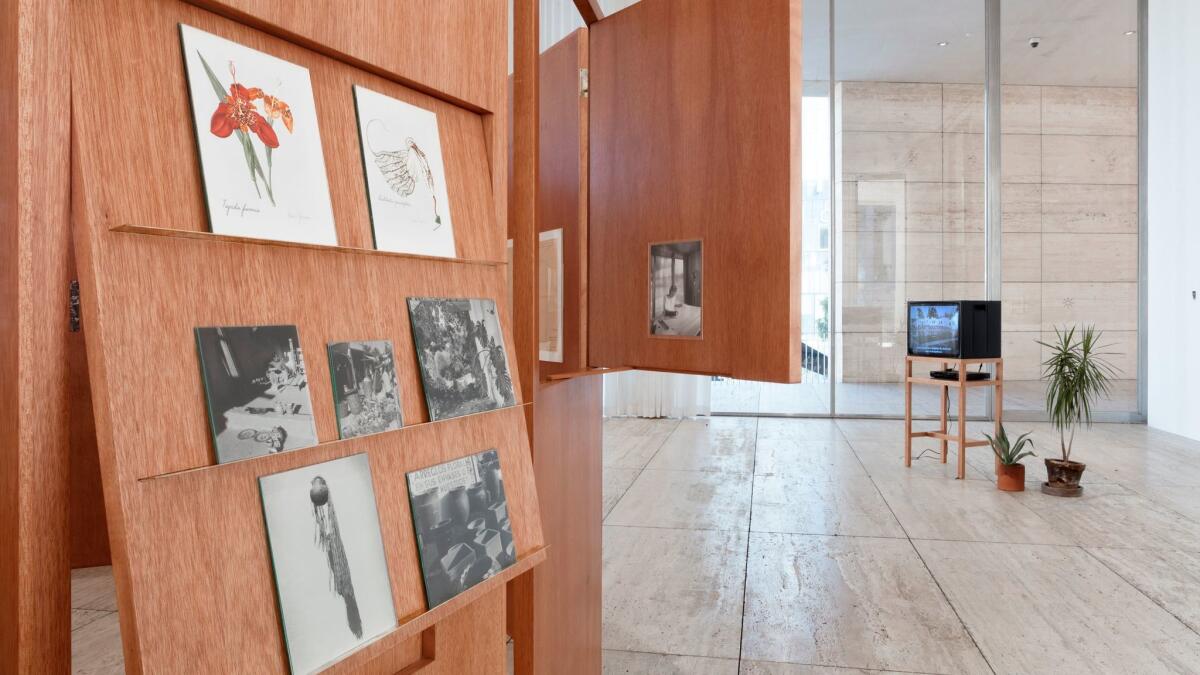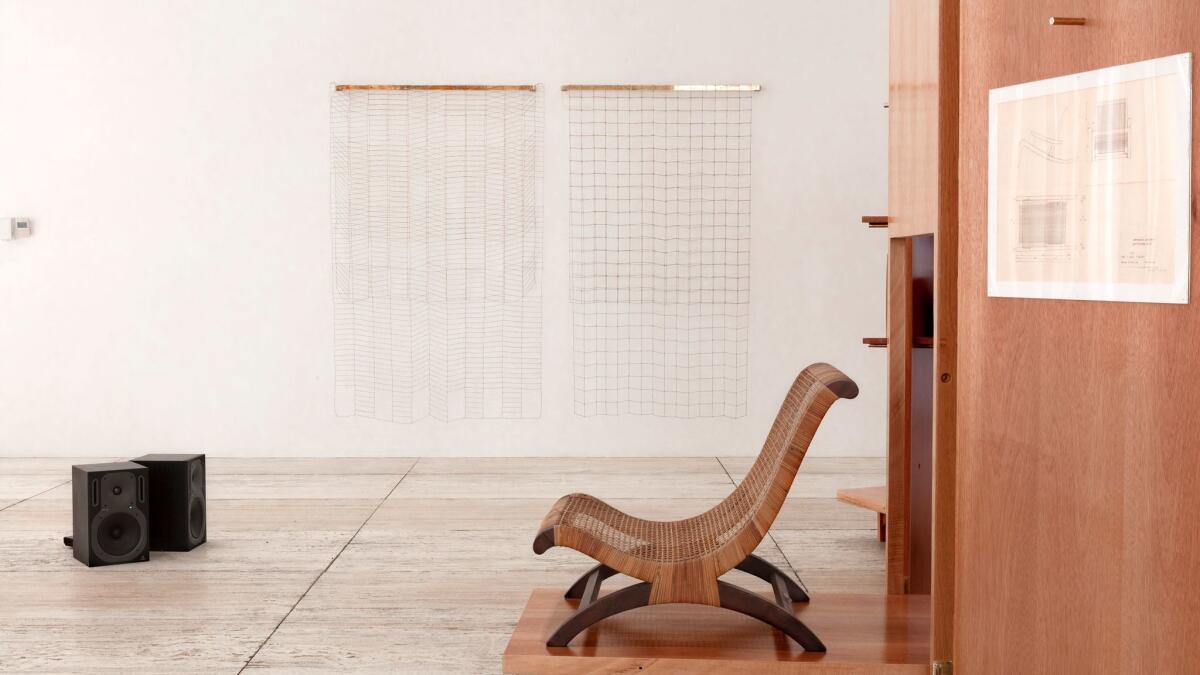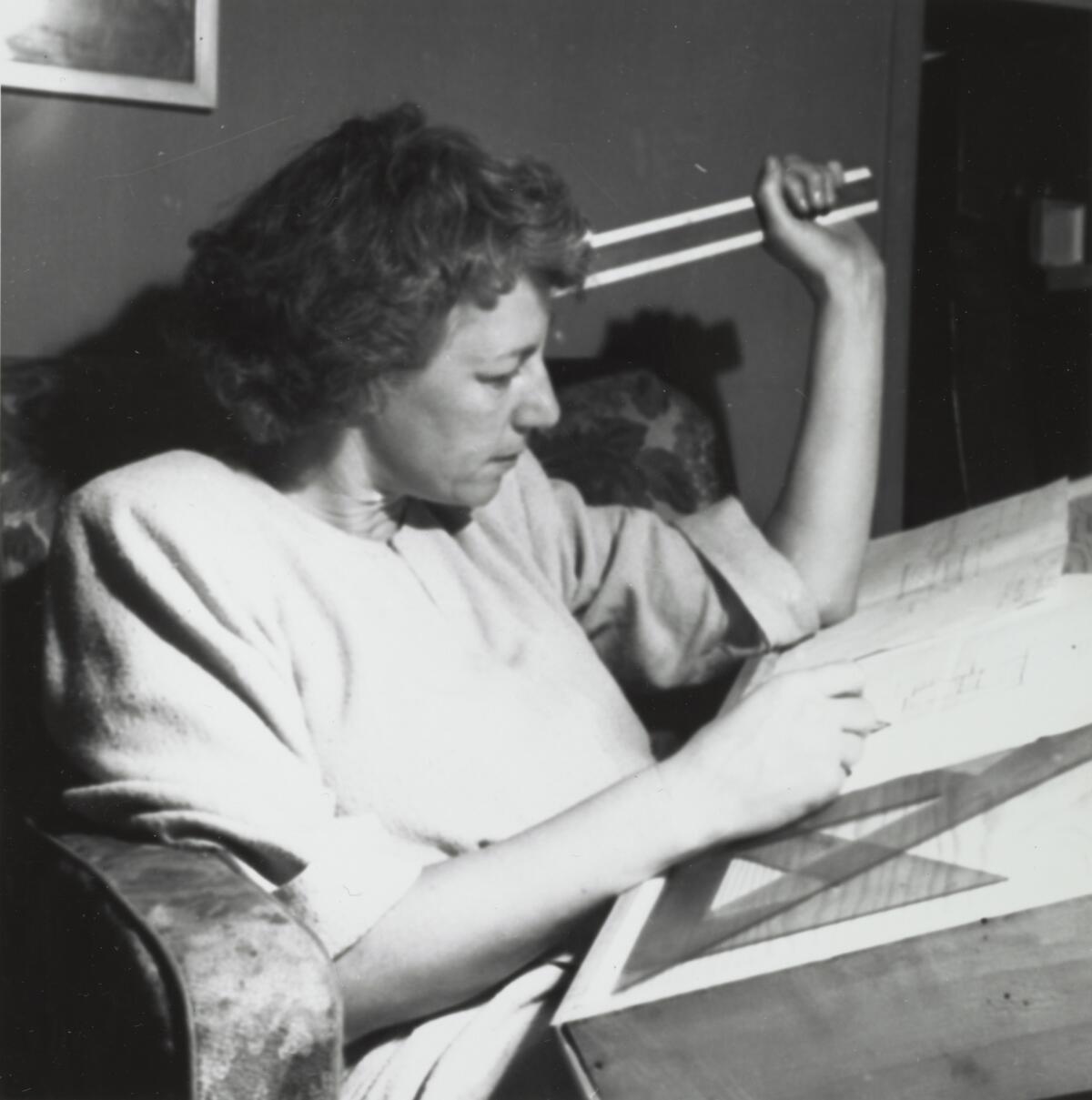The L.A. architecture critic who helped bring the story of Mexican design to the U.S.
Esther McCoy is best known as the architecture writer who helped shape the story of Modernism in Los Angeles. Less known is the nearly year-long period she spent in Mexico in 1951. During this time, she wrote about key architectural developments in the country — such as the early designs of Mexican Modernist Luis Barragán and the construction of the National Autonomous University in Mexico City, the iconic campus designed by Mario Pani and Enrique del Moral that is now a UNESCO World Heritage site.
A small exhibition at the Museo Jumex in Mexico City, on view through Sunday, examines this period in McCoy’s life, when she settled in the city of Cuernavaca for nearly eight months. There, she became good friends with photographer Lola Alvarez Bravo and artist Helen O’Gorman, the botanist and painter who was known for her delicate depictions of Mexican flora — and for being the wife of famed muralist Juan O’Gorman.
“Cuernavaca was called the ‘City of Eternal Spring,’” says exhibition co-curator Jose Esparza Chong Cuy, who is based at the Museum of Contemporary Art in Chicago. “It was a time when a lot of left-wing and radical thinkers were spending time in Cuernavaca. A lot of Americans were there.”
Rather than fighting nature, she saw architecture that embraced it.
— Jose Esparza Chong Cuy, co-curator of "Passersby 02: Esther McCoy"
The exhibition, titled “Passersby 02: Esther McCoy,” is part of a series at the Museo Jumex that looks at the ways in which foreign cultural figures have engaged with Mexican culture and history.
“The show presents [McCoy] as this kind of bridge,” says Esparza, “from L.A. to Mexico and from Mexico to L.A.”

The architecture critic, who had once worked in the studio of Rudolph Schindler in Los Angeles, was intrigued by the type of design she found in Mexico.
“She was very interested in this marriage between Modernist architecture — between the horizontal straight line — with popular art, with traditional ways of doing things,” Esparza says. “The idea of architecture that had to adapt to its habitat. It’s houses that accept accidents of nature, like Barragán’s house in [the Mexico City neighborhood of] El Pedregal, which take the shape that it does because that area is made up of lava fields.
“Rather than fighting nature, she saw architecture that embraced it,” he adds. “And that was connected to what was happening in L.A. architecture.”
The show features excerpts from McCoy’s writings — as well as other ephemera: photographs by McCoy from her time in Mexico, paintings by O’Gorman of the plants she recorded in El Pedregal, and, interestingly a sample of a butaque chair created by furniture designer Clara Porset (a furniture maker of Cuban origin who had settled in Mexico).

The chair, a type of lounger whose origins date to ancient Egypt but which was popularized by Spanish, then Mexican artisans, was updated by Porset for the stark, Modern homes created by Barragán. The design caught McCoy’s attention, and she attempted to collaborate with Porset on a version for the United States market.
“[Porset] didn’t want to let go of the idea of the chair being handcrafted, while McCoy wanted to mass-produce it,” Esparza says. “It’s like American corporatization versus the informality of producing an object in Mexico. I find these tensions quite fascinating.”
The show includes an original butaque chair that Porset designed for the Prieto López family, who inhabited a groundbreaking 1940s home designed by Barragán. It also includes images from Porcet’s own archive.
Ultimately, the show offers an interesting point of connection between Mexico and Los Angeles.
The show presents [McCoy] as this kind of bridge, from L.A. to Mexico and from Mexico to L.A.
— Jose Esparza Chong Cuy, co-curator

“There are so many similarities between the architecture and the lifestyle,” Esparza says. “Being outdoors, being in the garden, that’s both of L.A. and Mexico.”
McCoy, who filed some of the earliest reports on important architectural developments in Mexico for the U.S. press, was an important nexus.
“I think of someone like her as this bridge of ideas,” says Esparza, “making a more diverse culture, a more rich culture.”
+++
“Passersby 02: Esther McCoy”
Where: Museo Jumex, Miguel de Cervantes Saavedra 303, Colonia Granada, Mexico City
When: Through Sunday
Info: fundacionjumex.org
Sign up for our weekly Essential Arts & Culture newsletter »
ALSO
As Trump aims to build a wall, Los Angeles architecture school SCI-Arc builds bridges to Mexico
An Esther McCoy revival tells story of L.A.'s modern architecture
Louis Kahn's Salk Institute, the building that guesses tomorrow, is aging — very, very gracefully
L.A. in the 1970s: A visual and architectural treasure trove at LAXART
Critic's Notebook: 'Architecture of the Sun: Los Angeles Modernism 1900-1970'
The biggest entertainment stories
Get our big stories about Hollywood, film, television, music, arts, culture and more right in your inbox as soon as they publish.
You may occasionally receive promotional content from the Los Angeles Times.








